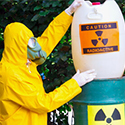In-situ Waste Management Solutions
Contaminated sites pose significant environmental and human health challenges, requiring effective waste management solutions. However, traditional excavation and off-site disposal methods are often expensive, time-consuming, and disruptive to surrounding communities. In-situ waste management offers a more sustainable and efficient approach, focusing on remediation techniques that treat and contain contaminants directly at the source. This article explores the importance of waste management and highlights various solutions for restoring environmental health for contaminated sites.
The Need For In-Situ Waste Management
Contaminated sites can result from industrial activities, improper waste disposal, accidents, or natural disasters. These sites can harbour hazardous substances, such as heavy metals, petroleum hydrocarbons, and toxic chemicals, which pose significant risks to soil, water, and air quality. In-situ waste management recognises the urgency to address these issues directly at the source, preventing further migration and minimising long-term impacts.
Benefits of In-Situ Waste Management
Cost-effectiveness: In-situ waste management techniques are often more cost-effective than traditional excavation and off-site disposal methods. By treating contaminants on-site, companies can avoid transportation and disposal costs and the expenses associated with extensive site restoration.
Minimised disruption: In-situ waste management minimises disruption to local communities, eliminating the need for large-scale excavation and transportation of contaminated materials. This approach allows businesses to continue operations while addressing environmental concerns efficiently.
Enhanced environmental protection: In-situ waste management prioritises protecting and restoring the environment. Treating contaminants in place reduces the potential for further contamination, preserving soil quality, groundwater resources, and ecosystem health.
[/vc_column_text]
In-situ Waste Management Solutions For Contaminated Sites: Restoring Environmental Health
In-situ Waste Management Solutions
Soil vapor extraction (SVE): SVE is a technique that removes volatile contaminants from the subsurface. This method involves the installation of extraction wells, which pull air through the soil, collecting and treating the contaminants before release. SVE is effective in treating petroleum hydrocarbons and volatile organic compounds.
In-situ bioremediation: This approach harnesses the power of naturally occurring microorganisms to degrade organic contaminants. Techniques such as bioventing and biosparging introduce oxygen and nutrients to enhance microbial activity, promoting the breakdown of pollutants into non-toxic by-products.
Permeable reactive barriers (PRBs): PRBs are barriers installed underground to intercept and treat contaminated groundwater. These barriers are constructed using reactive materials that can immobilise, transform, or degrade contaminants as they pass through. PRBs effectively treat various contaminants, including heavy metals and organic compounds.
Chemical oxidation: Chemical oxidation involves the injection of oxidising agents into contaminated soil or groundwater to break down pollutants into less harmful substances. Common oxidants include hydrogen peroxide, permanganate, and ozone. This technique is effective in treating a variety of organic contaminants.
Phytoremediation: Phytoremediation uses plants to extract, degrade, or immobilise contaminants from soil or water. Certain plant species can accumulate heavy metals or break down organic compounds through natural processes. Phytoremediation is a sustainable and cost-effective approach, particularly suitable for large-scale contaminated sites.
Contact A-Thermal Retort Technologies for details
As companies embracein-situ waste management, they contribute to the long-term sustainability and well-being of the environment and surrounding areas. Contact an A-Thermal representative today for more information, or continue browsing our website for additional information about our services.








Stephen Cash
Waste management can be challenging great to see companies like your own on the cutting edge of innovation.
Samantha Scott
Couldn’t agree more Stephen!